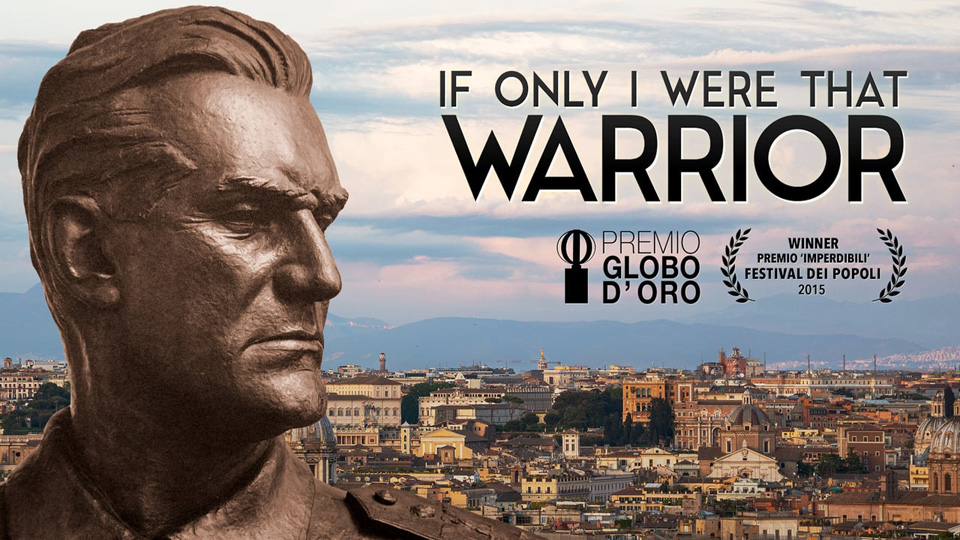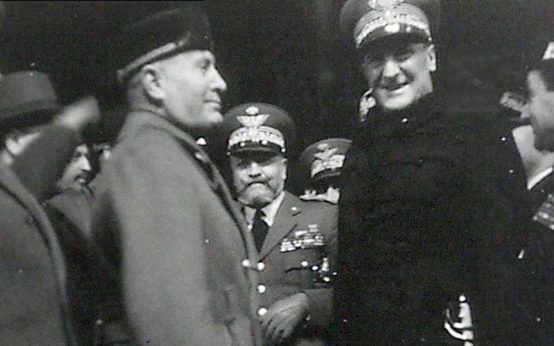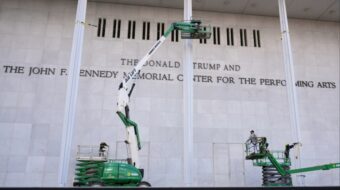
On the afternoon of Sat., Oct. 7th, the Vito Marcantonio Forum, the New York City-based organization dedicated to preserving and expanding the legacy of the seven-term progressive congressman Vito Marcantonio, hosted a special screening of the 2013 documentary, If Only I Were That Warrior, a film about the 1935 invasion of Ethiopia by Mussolini’s fascist army, and more specifically its modern legacy.
The film, introduced by professor Gerald Meyer, a co-chair of the organization, was produced and directed by Valerio Ciriaci and was made in collaboration with the New York-based Centro Primo Levi, and the Calandra Institute of Queens College. The film centers particularly on the controversy surrounding the construction in Italy of a monument to the Italian General Rodolfo Graziani, the leader of the fascist invasion, who came to be known as the “butcher of Ethiopia,” and serves as a vehicle for examining the entire legacy of fascism.
The film documents how the Graziani monument drew an immediate reaction from the Italian left and from the Ethiopian diaspora. It begins with Mulu Ayele, an Ethiopian immigrant to Italy, and her efforts to spread the word, via her radio show, about this attempted glorification of a fascist war criminal. Ayele’s broadcasts played an important part in generating a worldwide outcry. In this regard, the film features the efforts by U.S.-based Kidane Alemayehu, executive director of an important organization behind the anti-monument efforts, The Global Alliance, and Nicola Dimarco, a descendant of one of the invading fascist soldiers who now feels he must atone for the crimes committed by his forbear.
The filmmakers visited Affile, the town just outside of Rome where the monument was erected, and interviewed the town’s neo-fascist mayor, Ercole Viri, the driving force behind the monument’s construction. According to Viri, the idea for the monument first arose in 1957, and he brought it back to life in 2008. That such a commemoration of a fascist would happen in Affile is not surprising since, according to several interviewees, the town is notorious for exuding a fascistic mentality. Also unsurprising is that the inauguration of the monument coincided with the beginning of the tenure of the far-right national government of Silvio Berlusconi.
In 2013, however, when it was revealed that some 130,000 euros of public money had been used to build the monuments, Nicola Zingaretti, the governor of Lazio, the region in which the town is located, cut off all further funding, saying he had been tricked as to the actual intentions of the town’s mayor. In addition, and again, perhaps due to the international scandal that the monument provoked, Viri was put on trial under a law forbidding the apology for fascism. This is of historic importance because few people have ever been charged under this law and no one has been convicted. Trial of the present case has been repeatedly delayed and is next scheduled to be heard in November.
Why invade Ethiopia?
Mussolini’s pretext for the invasion was to avenge the 1895 failure of Italian imperialism to extend its African colonial holdings into Ethiopia, suffering a devastating defeat by Ethiopian forces at Adwa. Mussolini vowed to renew this failed campaign and once and for all establish an Italian empire in Africa. By contrast to the earlier defeat, in 1935 the material imbalance of force and the brutal methods employed by the invaders predestined the outcome of the war, and Ethiopia became a victim of fascism and Italian colonialism. Mussolini and the fascists wanted an Italian empire and it was Ethiopia that paid the price.
Besides using the defeat at Adwa as a pretext, the fascists also exploited the existence of class divisions, manifesting itself as inter-ethnic conflicts in Ethiopia. And as a related justification, the fascists’ propaganda emphasized the existence of slavery in Ethiopian society, thus saying that their aim was not to build an Italian African empire but to liberate slaves.
During the actual fighting, troops under Graziani’s command were responsible for some of the worst atrocities of the Ethiopian aggression. Among these was the extensive use of chemical weapons which, although alleged by Ethiopian Emperor Haile Selassie himself before the League of Nations in 1936, was denied by former fascists and their apologists until 1995 when, as the film documents, the relevant records in the central state archives were declassified and the use of poison gas by the fascist invaders was conclusively proven.
After the fascist victory a notorious wave of atrocities began in Addis Ababa on February 19, 1937, initially in response to an attempt made on the life of Graziani, in which some 30,000 Ethiopians were killed in only the first three days. This was followed by a brutal nationwide round of mass killings, including such atrocities as the burning of inhabited buildings and the notorious massacre at the Ethiopian monastery of Debre Libanos, where some 2000 priests, monks and pilgrims were killed by fascist troops acting under orders from Graziani. In the film an elderly monk who as a young boy had witnessed the Debre Libanos massacre gave a firsthand account.
In total it is estimated that some one million Ethiopians were killed by the fascist forces operating in the country under command of Graziani. The atrocities continued until early 1938 when Graziani was finally replaced by the relatively more compassionate Duke of Aosta. Shortly thereafter, in 1941, the fascists were driven out of Ethiopia by a combined Sudanese and Ethiopian force under the command of the British special operations officer Orde Wingate. Graziani himself went on to lead Italian fascist troops into Egypt, where they suffered a humiliating defeat at the hands of the British. That defeat set the stage for the British counter-invasion of Libya and the initial capture of the important port city of Tobruk. After this defeat Graziani was in disgrace until near the end of WWII, when he was recalled to serve Mussolini’s puppet government in northern Italy.

The entire affair of the Graziani monument begs the question, How could this happen in today’s Italy? In Germany it would not be possible, even for a right-wing government, to put up a monument to the memory of a Nazi general. However, in Italy nothing comparable to the de-Nazification program that went on in Germany took place. Why was that?
To truly understand this we need to go back to the post-war period and western imperialism’s initiation of the Cold War. The U.S. ruling class always favored Mussolini and after the war sought to protect the former fascists and use them against the enormously popular communists. As for Graziani himself, he was briefly imprisoned as a war criminal, but this was more of a protective custody since right after the war many former fascists were killed by the popular masses. The Allies held him for a few years and released him when they felt that the danger of assassination had passed. Graziani continued to serve imperialism, going on to head the neo-fascist political party, MSI, by end of the 1940s.
The 1990s in Italy evidenced an official reaction against anti-fascism and a wholesale legitimation of the fascist period, paving the way for things like the Graziani monument. Also relevant to this particular situation are the relationships, commercial and otherwise, between the present Italian government and the imperialist-supported dictatorial Ethiopian regime, as well as continued divisions within Ethiopian society. Taken together these factors allowed the memory of the fascist invasion to fade away.
Indeed, one thing heard in the film, even by some Ethiopians, was that the invasion was, “a long time ago” and “what’s done is done.” But facing and understanding these events are important not only in Ethiopia but also Italy, the U.S. and the rest of the world. The importance of remembering is precisely one reason why there is an effort to suppress or at least ignore this history.
The screening ended with a Q&A session featuring the film’s director, cinematographer and audio engineer, followed by closing remarks from Professor Meyer.
The film’s next screening will be at the Fashion Institute of Technology, (FIT), 227 W. 27th St., New York, on Mon., Oct. 30 at 6:30 pm, again to be followed by a Q&A with the director.
If Only I Were That Warrior (2015)
In Italian with English subtitles
Color, 72 minutes
Director/producer Valerio Ciriaci
Cinematographer/producer Isaak Liptzen
Audio Engineer Luigi Porto










